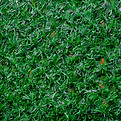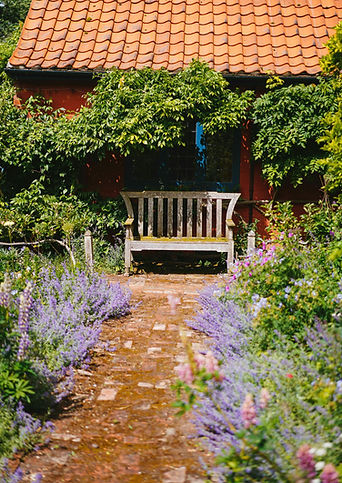Gardening Advice
A garden isn’t just a collection of plants - it’s a living, breathing ecosystem. Whether you have acres of land, a balcony, or even just one hanging basket or pot, you can design a space that benefits local wildlife while remaining beautiful year-round.
Why help wildlife? Well, their home was destroyed for ours, so I think it's only fair to give a little something back! Besides - it looks so much better too!
Essentials for a Wildlife Garden
If you want to support nature in even the smallest of spaces, aim to include at least these three elements:
-
A water source – A pond, birdbath, or even a shallow dish of water creates a vital habitat for frogs, insects, and birds.
-
Wildflowers – Native wildflowers provide food for pollinators while adding bursts of colour to your space.
-
A tree or shrub – Trees and shrubs offer shelter, nesting sites, and food for birds, insects, and small mammals.


Creating Natural Habitats
Beyond the basics, adding different habitats can turn your garden into a sanctuary:
Log piles & leaf litter – Rotting wood and fallen leaves create homes for insects, hedgehogs, and fungi while enriching your soil.
Insect hideaways – Bee hotels, drilled wood, or simple gaps in garden walls provide crucial nesting spaces for solitary bees and other beneficial insects.
Rock gardens & dry patches – These mimic natural landscapes, creating safe spaces for sun-loving creatures like butterflies, some birds, and even reptiles.
Dense planting & hedges – A thick hedge or layered planting gives birds shelter while creating a softer, natural feel for your garden.
Seasonal Beauty and Year-Round Interest
A truly great garden isn’t just beautiful in spring—it evolves through every season. Choose plants that bloom at different times, ensuring your space stays lively even in winter. Evergreens, berries, and seed heads provide food and structure in the colder months, while summer blooms add colour and fragrance. Always consider when your plants will bloom - aim to have at least one plant looking their best every month of the year.
The best gardens aren’t just functional—they create an experience. Whether it’s a tranquil sanctuary or an immersive adventure, design with movement and purpose:
-
A garden that feels like a journey – Create winding paths or clustered planting that makes visitors feel like they’re exploring a hidden paradise.
-
A garden that tells a story – In a family-friendly space, an open layout with well-placed pots and painted walls can reflect the warmth of shared moments.
-
A wild escape – Depending on your style, consider letting native plants spill over, creating a lush, untamed feel that brings nature closer.

Keep in mind...
A good garden doesn’t need to be perfect—it just needs to invite life. Whether you’re adding a few pots of wildflowers or designing a rich, layered habitat, every effort helps make the world a little wilder and a little more beautiful.
Garden Theme Inspiration
Dedication. Passion. Vision.
Choosing a garden theme can help create a space that feels intentional, inviting, and uniquely yours. Whether you want a whimsical fairy-tale setting or a sleek modern retreat, there’s a theme to match every personality.
Remember, your garden is for you, so you don't need to stick to one style - add some quirky elements, carry on the inside of your house to outside, mix and match elements, have fun with it!
Remember...
Designing with Purpose is the way to go! Keep in mind your needs when you work to get your dream garden; Are you on a budget? Do you need something low maintenance? Do you need a lot of space or storage? Do you have pets or children and need to consider non-toxic plants? All of these things can affect the way a garden is designed and used, after all, it needs to be functional as well as pretty!
Whatever theme, plants, or decoration you choose, think about how your garden feels as you walk through it. Does it tell a story? Does it take you on a journey? A twisting jungle trail might suit an adventurous personality, while an open, elegant patio could be perfect for family gatherings and entertaining guests.
A garden should be more than a collection of plants—it should be a space that reflects you while welcoming nature.
Whether you go for rustic charm, urban minimalism, or fantasy whimsy, let your creativity bloom!
Garden Dont's - What to Avoid
Creating a beautiful, wildlife-friendly garden isn’t just about what you add—it’s also about what you avoid. Here are a few things that can harm your garden’s health, sustainability, and overall appeal...

Plastic Grass!
Artificial turf might seem convenient, but it blocks natural drainage, overheats in the sun, and offers zero benefits to wildlife. Worse, it sheds microplastics into the ground, contributing to pollution and attracts pests and mould to hide out underneath. Instead, opt for real grass, native ground cover plants, or decorative gravel and stone pathways.

Barren Landscaping!
Too much paving, concrete, or decking can block natural water absorption and reduce greenery. Instead, balance hard landscaping with soft elements -living walls, potted plants, flower beds, or vertical gardens, to keep nature a part of your space. Consider using softer colours too, by keeping natural stone or brick or painting and decorating with warm colours and furnishings.

Flimsy furniture!
Cheap, flimsy furniture may save money upfront, but it often cracks, rusts, or fades quickly, creating a dangerous hazard and unnecessary waste. Instead, choose sturdy, weather-resistant materials like treated wood, metal, or recycled plastic that can last for years with minimal maintenance.

Use of Chemicals!
Harsh chemical pesticides can kill beneficial insects and disrupt natural food chains. If you need to manage pests, opt for organic methods like companion planting, introducing helpful insects (like ladybirds for aphid control), or using natural deterrents instead.
Dragonfli (no affiliation) has a great selection of biological pest control. Beee thoughtful!

Cluttered space!
An untidy garden filled with litter and neglected items can attract pests, pose safety hazards, and harm wildlife. Plastic waste, broken objects, and abandoned furniture can trap or injure animals. Clear out unnecessary junk, upcycle where possible, and keep your space clean while maintaining cosy, natural habitats.

Spend a fortune!
Sure, you can opt to spend thousands on a pro team to get everything done in a week, or, you could buy from people like me who sell plants at reasonable prices, and browse marketplaces and ebay for cheap plants and decorations too! A DIY option can lead to a very rewarding journey and save some cash. If you're not physically able, consider some low maintenance pots.












